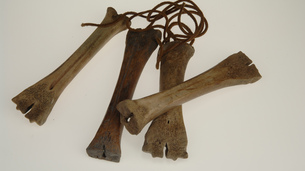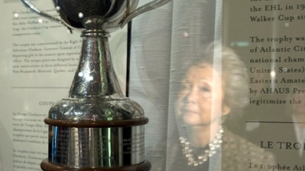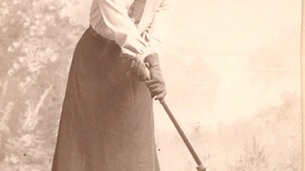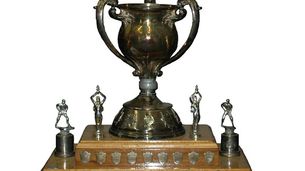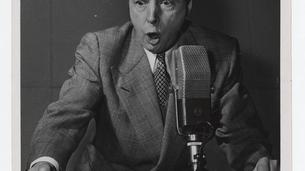Ice Hockey as we know it today is a fast sport played on skates made by various manufacturers, but they all have one thing in common, a thin blade of medal is what they skate on.
Centuries ago the 1st skates were made from animal bone, and from different types of animals and their bones, depending on where this culture of people who made them recided. At first these skates were for hunting and travelling across lakes and rivers, and then games were eventually played wearing these bone skates.
Let's take a look at at some of the history behind these skates.
Skates made from animal bones have been found throughout Scandinavia and Russia, including some that date back to around 3000 B.C.

The oldest pair of skates known date back to about 3000 B.C., found at the bottom of a lake in Switzerland. The skates were made from the leg bones of large animals, holes were bored at each end of the bone & leather straps were used to tie the skates on. An old Dutch word for skate is "schenkel" which means "leg bone."
According to a study done by Federico Formenti of Oxford University, and Alberto Minetti of University of Milan, the Finnish people were the first to develop ice skates about 5000 years ago, which were made from animal bones.
The researchers showed that people traveling across the region's frozen lakes reduced their physical energy cost by 10 percent.
Instead of walking all the way around the lake, he said, people found it much easier to travel between towns by skating or walking across the ice.
These early skaters would, the researchers believe, stand on two horse bones and propel themselves with a stick.
Southern Finland has more lakes within 40 square miles (about 100 square kilometers) than any other region in the world.
"I think ice-skating happened in [this] area because of the several long and thin lakes that people had to cross in order to get around, hunting for food or for any daily activity," Formenti said. Read Their Article Here
William Fitzstephen, writing in the 12th century, described the use of bone skates in London, England:
.... when the great fenne or moore (which watereth the walles of the citie on the North side) is frozen, many young men play upon the yce, some striding as wide as they may, doe slide swiftly... some tye bones to their feete, and under their heeles, and shoving themselves by a little picked staffe, doe slide as swiftly as birde flyeth in the aire, or an arrow out of a crossbow.
The oldest known image of ice skating is from the Carta Marina Wallmap by Olaus Magnus in 1539.
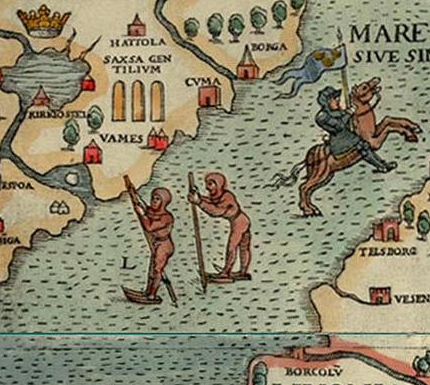
Hurstwic, LLC has a interesting article on Viking-Age Ice Skates, and they made replica bone skates where they tested the Olaus Magnus map drawing method. Read Their article here
Now what about Ice Hockey and other sports played on these bone skates.
James Laverance, who is a general sports historian from Canada, has been researching Ice Hockey, and has published on his blog some interesting facts about Hockey type games being played on the ice, by both American and Canadian First Nations peoples. Read His Blog Here
Myers Auction Gallery sold this beautiful Early Native American Indian Carved Bone Skate in early 2012 at auction.

Check Out The 12 Photos Of this Bone Skate Here
The Mi'kmaq (Mic Mac) First Nations people of Nova Scotia, Canada were known to have tied bones and shin blades to their moccassins to skate on the frozen lakes and ponds.
The Mi'kmaq people also had names for games and sticks that were used for these games. These words in their basic spelling are Oochamkunutk and Alchamadyk - other variations of spelling for these words are also used. The Mi'kmaq people were also famous for their hand carved sticks that were used for early Hockey games. So lets see - You have the Mi'kmaq people who tied bones to their moccassins for skating, had names for games & sticks on ice, and they were famous for their hand carved sticks. Although there is no documented proof, I think you can come to a very easy conclusion.
Different Northern American First Nations people have been described as skating with animal bones on their feet, and playing different types of games on ice. It has been recorded that some of of these games were called Shinny, which is a form of Ice Hockey. The word "Shinny" is actually a English word, and that is the term that was used by early explorers of the Americas when writing into their reports.
In Conclusion, we have Northern Europeans skating on bone skates centuries ago, then we have American First Nations who were described in the 1700s, that were playing games on ice wearing bone skates, then we have the Mi'kmaq people of Nova Scotia, Canada who were famous for the Hockey sticks they made, and were also described as wearing bone skates on ice. We have to conclude that the very 1st games of Hockey played on ice - They were wearing Bone Skates.

